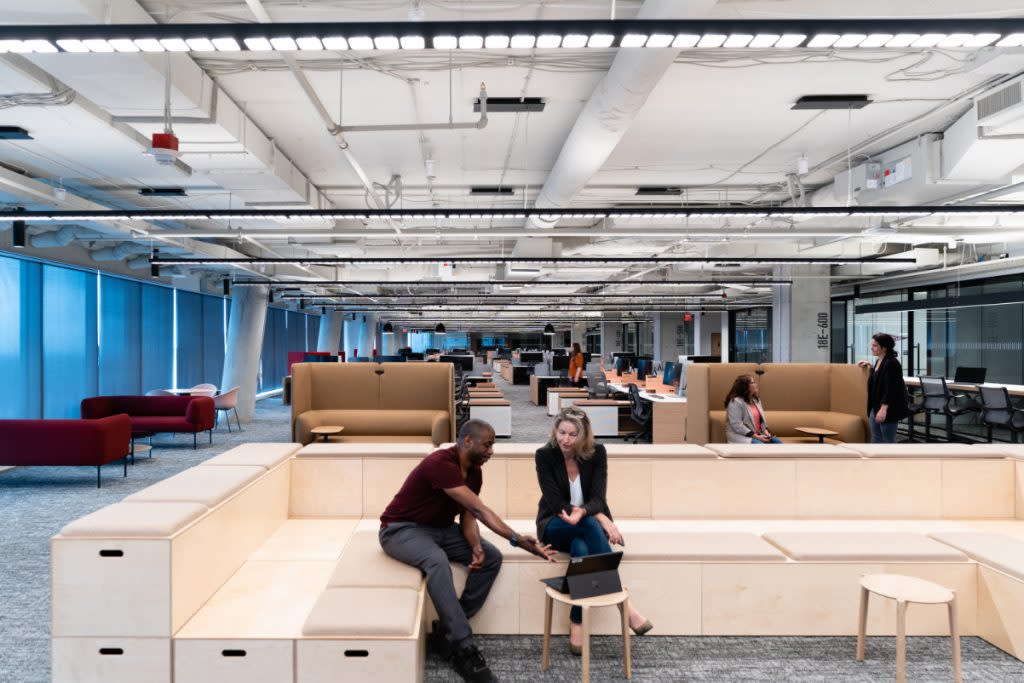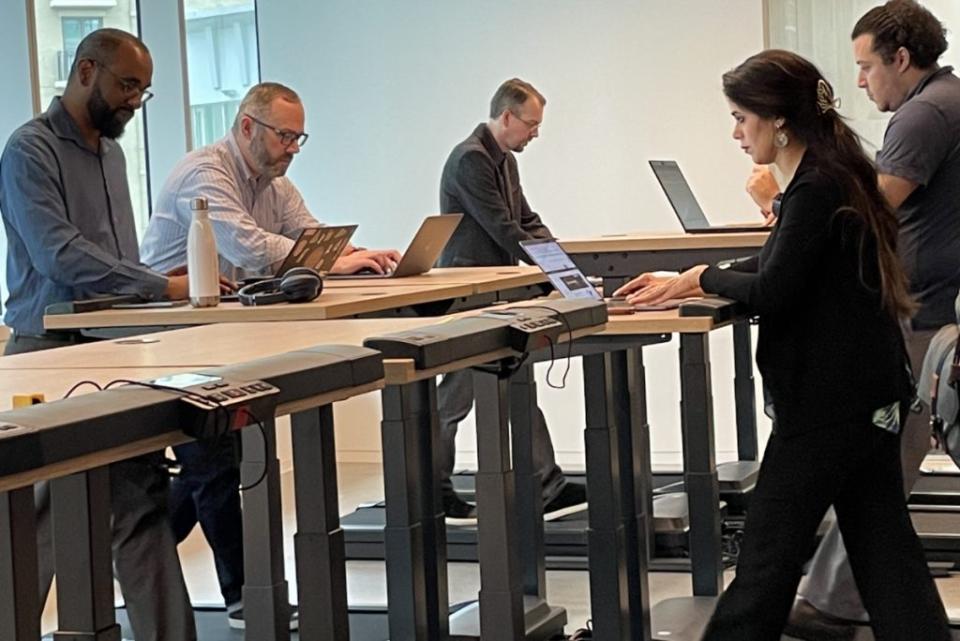Marriott Opens Expansive New Headquarters Despite Rise of Hybrid Working

The pandemic debate is still raging over whether working in an office has considerable benefits over remote working — and if hybrid working is here to stay. Marriott International offered an incentive of sorts on this matter, opening this week its new global headquarters full of amenities.
Despite the recent popularity of remote working, the hotel giant expects most of its 2,800 regional corporate employees to report at least some days each week to the Bethesda, Maryland head office. Before the pandemic, it had about 4,000 employees based in Bethesda and satellite offices in the surrounding area.
The company started construction before the pandemic on the property, which is located closer to downtown and may offer an easier regional commute for many workers. The recent rise in remote and hybrid working didn’t prompt executives to change the building’s design dramatically, said Marriott CEO Anthony Capuano.
“We did take some number of fixed workstations and repurposed them to have even more collaboration in flexible working spaces,” Capuano said.
About a quarter of workspaces are a mix of hot-desking and collaboration, a spokesperson said.
Like many companies wooing employees back to offices, Marriott is using perks as enticements. Its new building includes a gym full of Peletons and similar high-tech machines. A daycare can host up to 91 children under age 5. There’s a set of rooms for lactation, plus space for meditation, naps, treadmill desks, and outdoor seating. The cafeteria provides food for sale, and meals will soon be orderable in advance via a company app for pick up. The cafeteria will also soon include offerings from local restaurants.
Marriott’s confidence in the return of in-office work stands in contrast to the views of other travel companies that have recently built new headquarters.
Airbnb, which opened a new headquarters in 2019, adopted an ongoing remote work policy in April. It has since downsized some of its real estate, leading it to write down its domestic and international leased assets by about $80 million in the second quarter. In May, Expedia Group called about 4,500 employees back to work in its new headquarters in Seattle, but it remains unclear how complete the return has been. A similar story holds for Tripadvisor, which debuted a new headquarters in 2015.
The verdict on Marriott’s move is still too early to make. The company has been bringing teams into its head office in phases, with the final group brought in last week. A spokesperson said it didn’t have a report on how full the office was yet, and reporters weren’t taken to view any floors where workers do daily tasks, but one bank of treadmill desks was half full.
Marriott International was prompted to drop its old headquarters when the lease came up.
“It would have been quite expensive to replace all of HVAC [heating, ventilation, and air conditioning] units along with all of the support systems that existed in that building,” said David Marriott, chairman of the board. “There was a feeling we needed to be in more of a downtown location more accessible to public transportation, restaurants, and an inspirational landscape.”
The return of employees to offices is believed to be correlated to a rebound in business travel, which some analysts don’t predict to happen in full until 2026. For more context, read Skift’s Future of Work Briefing.
“I am hopeful that a confluence of the appeal of this beautiful new building and the recovery of our business and the continued growth of our business will result in this being active for years to come,” Capuano said.
Subscribe to Skift newsletters for essential news about the business of travel.




